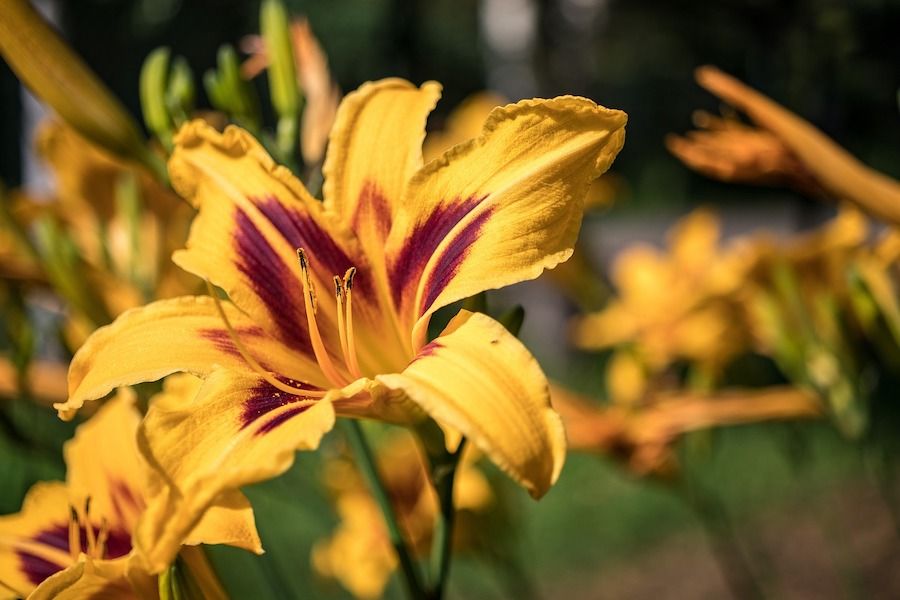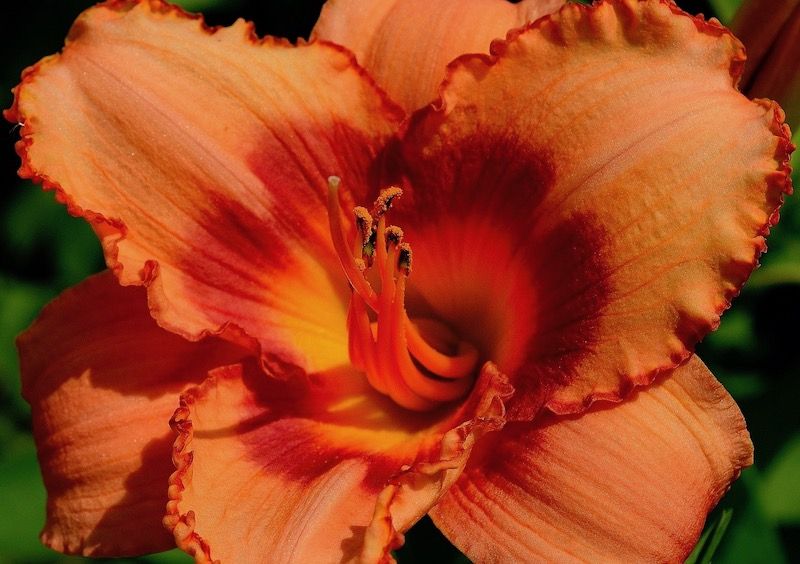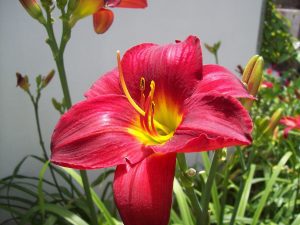Day Lilies – Splitting, Transplanting And Buying New Ones
If you are lucky, you already have daylilies crowding each other out along a fence, around a lamp post, and around an old well, and want to transplant some of them, perhaps give some to friends. In our town in Upstate New York, we trade day lilies on Memorial Day, to get a little variety, as long as we trust each other not to have bulb mites or gall midges.
We dig them up carefully. At that point they are still fairly small. Martha Stewart suggests using two forks, pried in opposite directions, to split the clumps apart.
Transplanting should be done in early spring, and the foliage can be cut back when the fans are replanted, to give the roots a chance to catch up. But anyone who has daylilies, even a lot of day lilies, will still want more, because there are so many colors, shapes and sizes.

The No. 1 favorite daylily is the low-growing Stella d’Oro, whose reliable yellow-gold blooms continue from spring through summer. A favorite found in supermarket parking lot medians, Stella d’Oro is nonetheless valuable for edging a perennial border or mixed in a charming cottage garden.
The taller daylilies are just that, flowers that bloom for a day. Luckily some have double flowers on each stalk, their foliage is great filler and they are friendly neighbors to other flowers.

For some exquisite cultivars, Martha Stewart discovered Nan Ripley, a daylily breeder at Walkabout Gardens in Iowa. If the kinds of day lilies at local garden centers seem too ordinary, you can always go to Walkabout’s website and put in an order for a double fan of something like the polychrome With One Voice, which combines cream, pink and pale, pale yellow in a flower that takes different configurations each time. Ripley’s daylilies run $100 to $150 for a double fan. Plus shipping.

Put day lilies in where they will get lots of sun. Water once a week if there is a dry spell. Because they are so short-lived, don’t bother trying to use them in a bouquet. Carolyn Roehm, instead, suggests making a bouquet out of delicate lilies-of-the-valley.
Visit Gardening Know How for much more information on day lilies and all kinds of other flowers.
– Linda Lee
